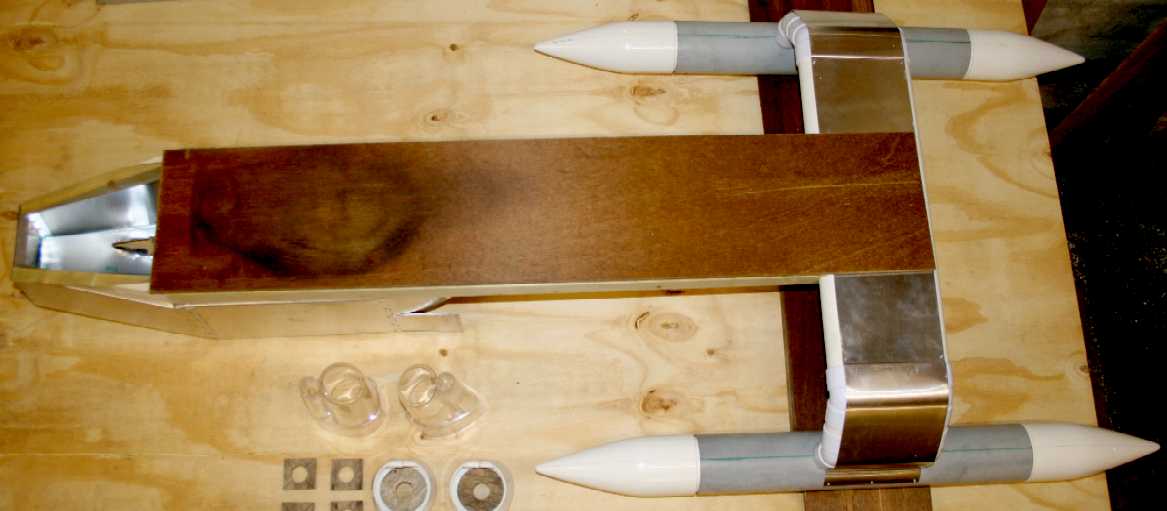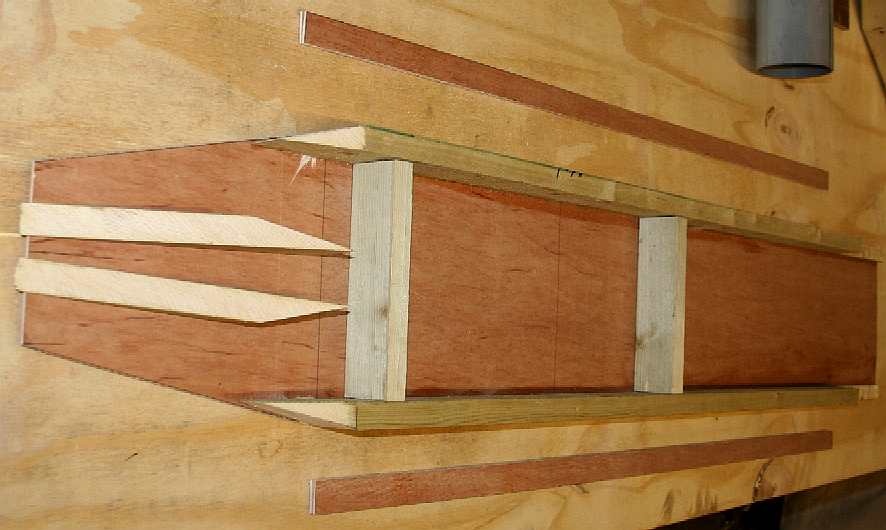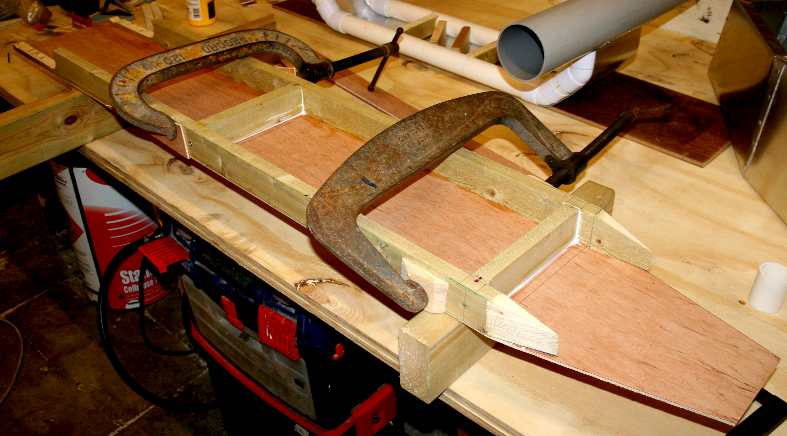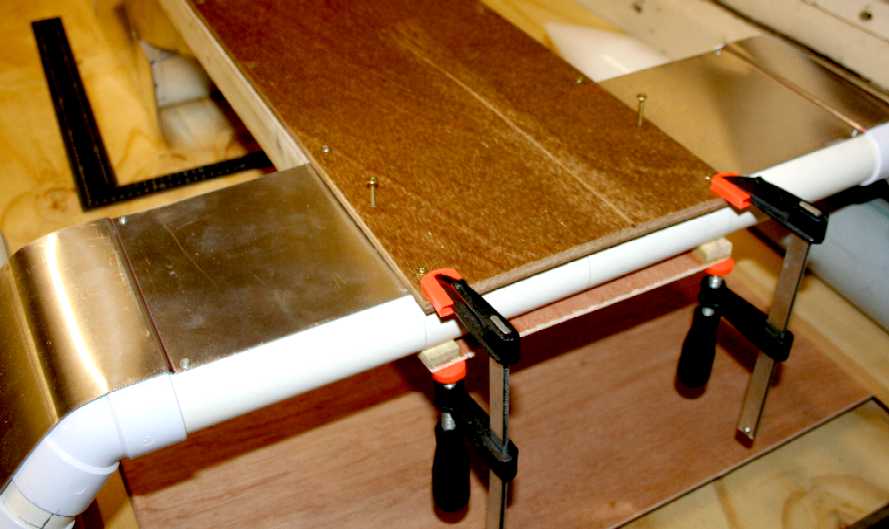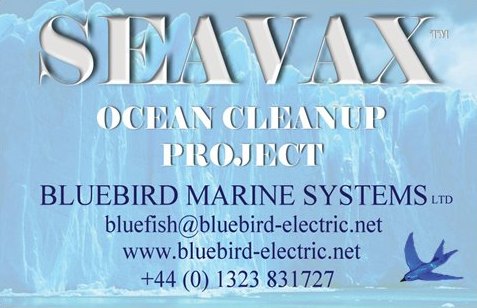|
SEAVAX™ - MODEL BOAT BUILDING IN WOOD
|
|
|
A lot of model boats are built of wood, just as rowing boats and some pleasure craft are still built using traditional methods. The days of the tall ships with cannons blasting are gone forever, together with the appalling deforestation that came with that period.
Wood is still good for certain tasks. It is relatively cheap to buy and easy to cut across the grain, plane and sand. Plywood gives us large flat panels and balsa wood is very light for making small models. Joining wood is not quite so easy, depending on how light and strong the craft needs to be.
Bonding wood that is going to come into contact with the sea, requires a waterproof adhesive. the same can be said of protecting hulls and decks. More so decks in the case of sailing boats, because salt water tends to preserve wood, but we still don't want swelling or joint leaks. The wooden parts on the Enterprise 1 are confined to the deck and superstructure, that will hardly ever see serious water spray and almost never immersion.
THREE POINTER - Only loosely placed by way of a test fit, the central beam is made of marine grade plywood and treated softwood. This beam connects the front and rear hulls, and provides the mountings for the solar panels. The full size vessel will be mostly aluminium and carbon fiber, not timber. Not to be flash, to be practical and so produce an extremely tough robot that might survive the odd close encounter. Even where COLREGs are obeyed to the letter by the onboard AI Captain, there will always be the occasional amateur at sea who has not got a clue - and does not have suitable equipment, or worse, has the equipment and fails to use it. Imagine someone like that in a very fast boat. It's a recipe for disaster - and a good argument for captain-less vessels. Granted, that it's not a lot of fun riding a speedboat such as a jet ski, if you cannot do manual stunts. The same for small sailing craft. Autonomy is thus for commercial transport, cruises liners and longer distance sailors.
Woodworking is an essential skill for boat builders, even where the eventual hull is aluminium or composite. These are the main component parts for the central beam, plus a plywood top cover (not shown). To prevent twist in the structure, it would be usual to use torque tubes, rather than beams, or a fully triangulated space frame, such as with the Bluefish ZCC. A little bit of flexibility from front to rear hulls will not affect our study.
Even so, we are bonding the assembly in time honored tradition, using 'G' clamps that are over 40 years old - and could do with reconditioning. The rear or tail (on the right of this picture) comes up a few degrees from the horizontal and the timbers taper down from the deck, that is not yet fitted, aft to the transom. The front end of this assembly will slot over the twin-hull cross beam and be secured using six stainless steel bolts. The idea is that we'll be able to disassemble the craft quickly for easier transportation to our test lake (see below), or for shows, etc.
Alignment
is crucial. The front cross member must be set at ninety degrees to the
superstructure deck. Once square, the assembly is clamped. Six pilot holes
are then drilled (1mm) and the plywood is countersunk. Six screws are then
fitted and the treatment is repeated on the underside. Using this method it
is possible to alter the angle of attack of the front hulls, to fine tune
the scooping effect that we are looking for. The plywood end is a very
highly stressed engineering area, where the hull (superstructure) mountings
for the wind
turbines will be made in steel.
The boom for the turbines
will be made of aluminium. That is going to be a lot of fun.
FAMOUS WOODEN STRUCTURES - The incredible de Haviland Mosquito WWII bomber, is an aircraft built of wood to reduce weight. Not only is this bird a lovely looker, but she is a wooden work of art. The oval-section fuselage of this craft was a frameless monocoque shell built in two halves being formed to shape by band clamps over a mahogany mould, each holding one half of the fuselage, split vertically. The shell halves were made of sheets of Ecuadorean balsawood sandwiched between sheets of Canadian birch, but in areas needing extra strength— such as along cut-outs— stronger woods replaced the balsa filler; the overall thickness of the birch and balsa sandwich skin was only 7⁄16 inch (11 mm). This sandwich skin was so stiff that no internal reinforcement was necessary from the wing's rear spar to the tail bearing bulkhead. The all-wood wing was built as a one-piece structure. It was made up of two main spars, spruce and plywood compression ribs, stringers, and a plywood covering. The outer plywood skin was covered and doped as was the fuselage.
LINKS
vafusa hydrocyclone separators Vortex depollution products shredders pet bottle perforator UK Forest Products Association Scottish Sustainable Construction Forum Passivhaus Trust- UK Passive House Organisation The Timber Research and Development Association Sustainable construction materials
Youtube
ARCTIC - ATLANTIC - BALTIC - BERING - CARIBBEAN - CORAL - EAST CHINA - ENGLISH CH - GULF MEXICO
INDIAN - MEDITERRANEAN - NORTH SEA - PACIFIC - PERSIAN GULF - SEA JAPAN - STH CHINA
PLASTIC OCEANS - RISING SEA LEVELS
Our love affair with plastic is choking the oceans. Once people know about it, they want to stop it. But how? The next question is who? Obviously, if any of the researchers involved so far had come up with a solution, they would have sorted it years ago. We are a practical think-tank fresh to the issue and without a budget. We hope to be able to collaborate with other marine organisations that are funded for this work, or who have funds to investigate viable projects. You cannot donate to us directly on this site, but we hope to identify partner sites shortly where you can support a project much like that proposed herein, or better still, our own practical experiments. Volunteer careers.
|
|
|
This website is Copyright © 2015 Bluebird Marine Systems Ltd. The names Bluebird™, Bluefish™, SeaNet™, SeaVax™ and the blue bird and fish in flight logos are trademarks. CONTACTS The color blue is a protected feature of the trademarks.
|
